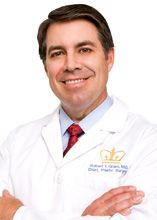How Pregnancy Affects a Tummy Tuck
While there are no medical safety reasons to avoid becoming pregnant after a tummy tuck, there is no definitive way to ensure the results of the procedure will remain intact throughout a new pregnancy.

Despite maintaining the best diet and exercise regimen, many patients are stuck with a few extra pounds around the abdomen that refuse to disappear. Mothers, in particular, often find themselves in this situation post-pregnancy. Thankfully, there are many cosmetic surgery options available to help them get their pre-baby bodies back, one of which is the tummy tuck.
A tummy tuck is a surgical procedure in which excess fat and skin are removed and muscles that have weakened over time are repaired, giving the patient a trimmer and smoother midsection. But what happens when a woman becomes pregnant after undergoing a tummy tuck? This is an issue many women address with their plastic surgeons when considering the procedure.
Medically speaking, a tummy tuck is a purely cosmetic procedure, so it does not affect a woman’s ability to become pregnant. A healthy woman who is of child-bearing age should be able to get pregnant just as easily after a tummy tuck as she would before the surgery.
Cosmetically speaking, pregnancy following a tummy tuck may have a negative impact on the results of the procedure. Since pregnancy involves weight gain and abdominal skin stretching, it is recommended that women who plan to undergo tummy tuck procedures wait until they are finished building their families, in order to allow the abdominal area to remain firm and taut after the surgery. Given that life rarely goes according to plan, this may not always be the case.
There are also many benefits in waiting until a woman is done having children. One of the biggest is the ability to combine a tummy tuck with sterilization procedures like tubal litigation. Rather than subjecting her body to 2 separate procedures, a woman can reshape her abdomen and also ensure her child-bearing years are complete with one surgery. In addition to sterilization procedures, there is also the option to address Cesarean scars or stretch marks acquired during pregnancy. By waiting to undergo a tummy tuck, a patient is given the option to address all of those issues at the same time.
On the other hand, many women who have had a tummy tuck and became pregnant again report they do not “show” as early as their non-tummy tuck counterparts. This is most likely the result of tighter abdominal muscles and skin from the surgery, and it is perfectly natural. As the stomach muscles will stretch along with the skin to accommodate the growing baby, there is nothing to indicate that pregnancy after a tummy tuck endangers the health of a child in any way. And since the abdomen is fully healed within 4-6 months of the procedure, there is typically no health risk to the mother, either.
While there are no medical safety reasons to avoid becoming pregnant after a tummy tuck, there is no definitive way to ensure the results of the procedure will remain intact throughout a new pregnancy. Therefore, it is a good idea to advise your patients to wait until they are done building their families, in order to reap lasting results from their tummy tucks.
How pregnancy will affect a particular patient’s body depends on a variety of factors, such as age, skin elasticity, and weight gain. Patients need to understand all aspects of their cosmetic procedures, and as their plastic surgeons, we must make sure they know their options.
Robert T. Grant, MD, MSc, FACS, is Chief of the combined Divisions of Plastic Surgery at New York-Presbyterian Hospital-Columbia University Medical Center and New York-Presbyterian Hospital-Weill Cornell Medical Center. He is also Associate Clinical Professor of Surgery in the College of Physicians and Surgeons at Columbia University and Adjunct Associate Professor of Clinical Surgery at Weill Cornell Medical College. For more information about Dr. Grant or to contact him, visit his website at www.robertgrantmd.com.